The United States has long attracted some of the world’s best and brightest, drawn by the strong U.S. economy, renowned universities, and reputation for entrepreneurship and innovation. But because of language, credential-recognition, and other barriers many of these highly skilled, college-educated immigrants cannot fully contribute their academic and professional training and skills once in the United States. As a result they work in low-skilled jobs or cannot find a job—a phenomenon known as brain waste.
What are the costs of underemployment in terms of forgone earnings?
Chosen excerpts by Job Market Monitor. Read the whole story at Doctors as Taxi Drivers: The Costs of Brain Waste among Highly Skilled Immigrants in the United States | migrationpolicy.org
In the report
What Are the Critical Determinants of Low-Skilled Employment among Immigrants?
The most striking result from the logistic regression is the effect that limited English proficiency has on the risk of low-skilled employment (see Figure 7).
Immigrant men and women with very low English proficiency (those who reported speaking English “not well” or “not at all”) were approximately five times more likely to be in low-skilled jobs than immigrants who speak English only, net of other factors in the model. Immigrants with medium levels of English proficiency (those who speak English “well”) were also disadvantaged: Their odds of low-skilled employment were twice as high as English-only speakers. This U.S. finding mirrors that of researchers in other OECD countries:48 Proficiency in the host-country language is consistently found to be the single most important skill immigrants need to succeed in the labor market.
Place of education also exhibits a strong, independent effect. Even when controlling for language skills and other factors, this analysis finds that those who came to the United States after age 25 (the definition used in the report for “foreign-educated” immigrants), were much more likely to be employed in low-skilled jobs than those who arrived before age 12 (the closest proxy to the U.S. born).
Chosen excerpts by Job Market Monitor. Read the whole story at Untapped Talent: The Costs of Brain Waste among Highly Skilled Immigrants in the United States | migrationpolicy.org
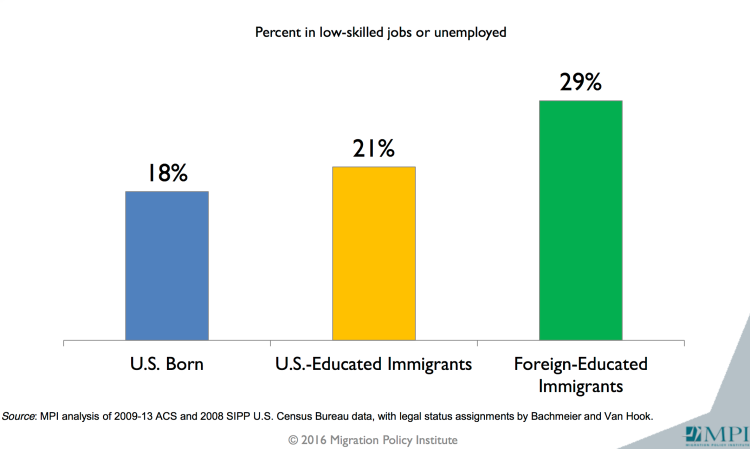
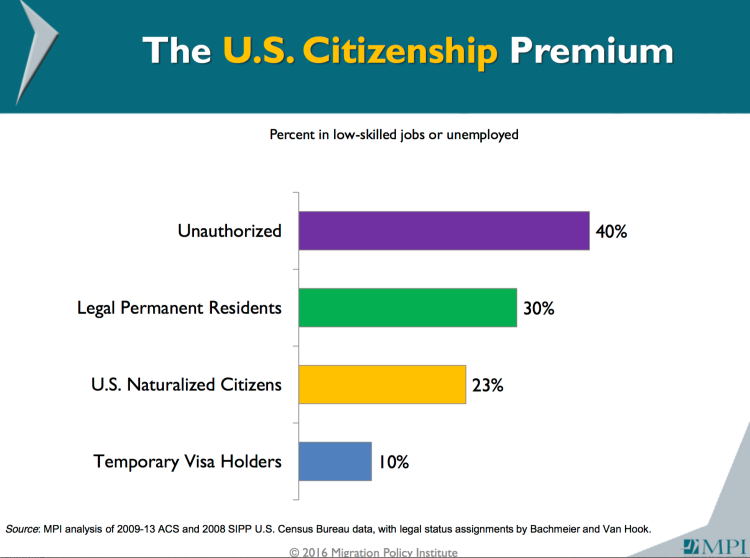
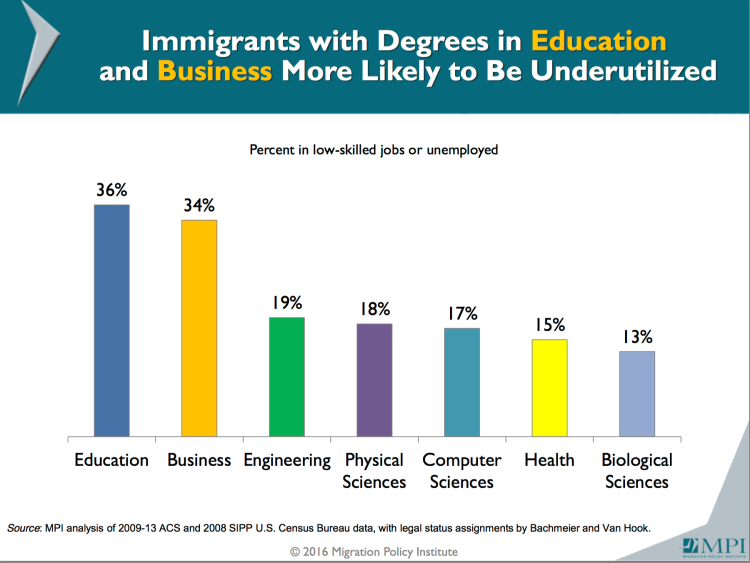
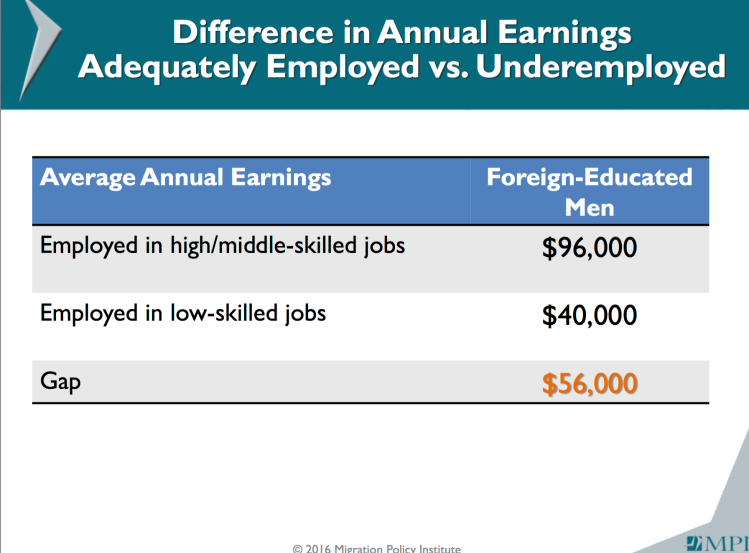
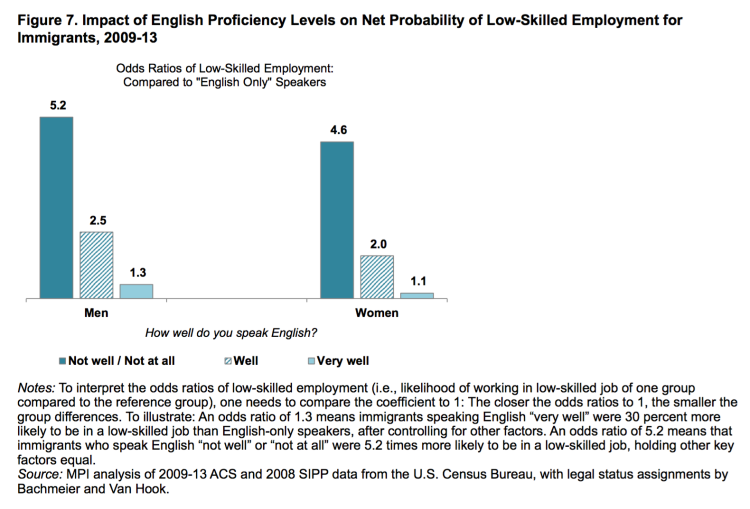



Discussion
No comments yet.